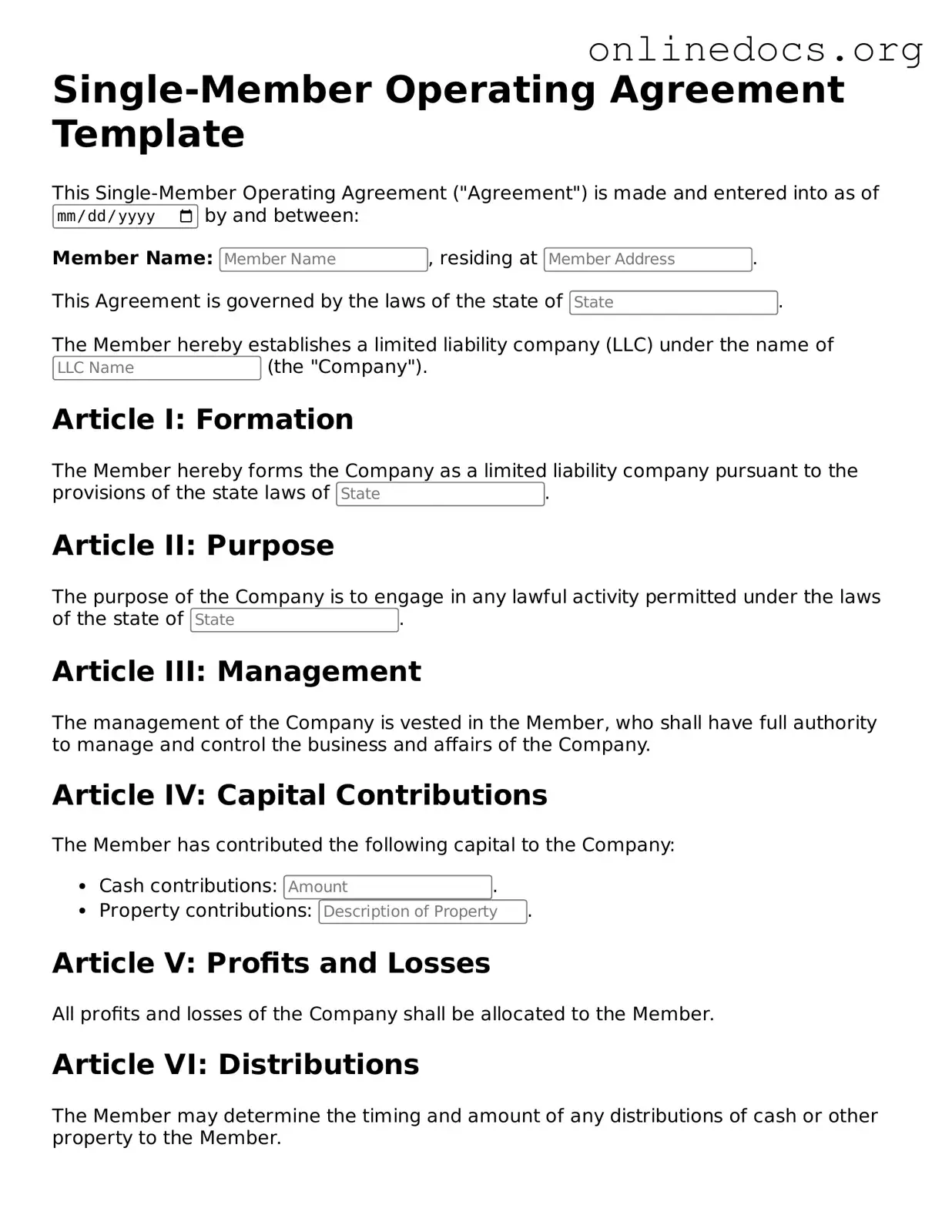A Partnership Agreement is a document that outlines the terms and conditions under which two or more individuals operate a business together. Similar to a Single-Member Operating Agreement, it establishes the roles, responsibilities, and profit-sharing arrangements among the partners. Both agreements aim to provide clarity and structure, ensuring that all parties understand their obligations. While a Single-Member Operating Agreement focuses on the operations of a single-owner business, a Partnership Agreement addresses the collaborative nature of a multi-owner venture, detailing how decisions are made and how disputes are resolved.
A Corporation Bylaws document serves as the internal rules governing the management of a corporation. Like a Single-Member Operating Agreement, it defines the framework within which the business operates. It typically includes information about the roles of directors and officers, how meetings are conducted, and how decisions are made. While the Operating Agreement is tailored for single-member limited liability companies (LLCs), Bylaws are specifically designed for corporations, emphasizing governance and compliance with state laws.
A Shareholder Agreement is a contract among the shareholders of a corporation that outlines their rights and obligations. This document is similar to a Single-Member Operating Agreement in that it establishes the terms under which shareholders can buy or sell shares, how dividends are distributed, and how decisions are made regarding the company. While the Single-Member Operating Agreement focuses on a single owner’s rights and responsibilities, the Shareholder Agreement addresses the dynamics between multiple shareholders, ensuring that everyone is on the same page regarding ownership and control of the company.
When establishing a single-member LLC, it's essential to consider the importance of thorough documentation, such as the operating agreement, which can often be complemented by resources available at legalformspdf.com. This site offers insights that can help clarify expectations and protect the interests of the business owner while ensuring a smooth operational framework.
An Employment Agreement is a contract between an employer and an employee that outlines the terms of employment, including duties, compensation, and termination conditions. This document shares similarities with a Single-Member Operating Agreement in that it clearly defines roles and expectations. Both agreements aim to create a structured environment where responsibilities are understood. While the Operating Agreement focuses on the operational aspects of a business owned by one person, the Employment Agreement centers on the relationship between the employer and employee, ensuring that both parties have a mutual understanding of their commitments.
